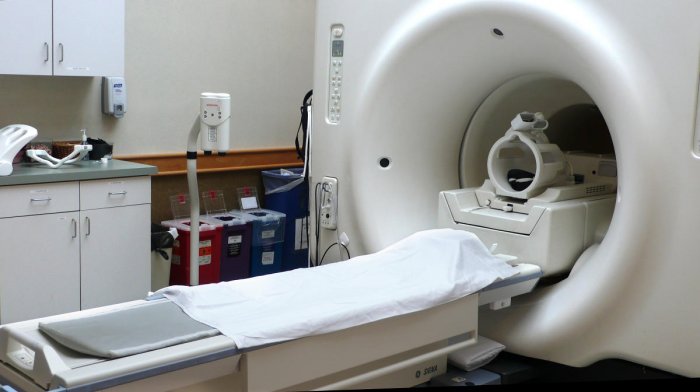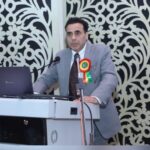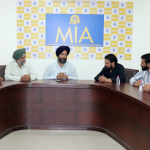Srinagar, Oct 29: Doctors who are part of the ‘Save Brain Initiative’ of Health Department Kashmir on Tuesday said the availability of CT Scan facilities in rural areas have prevented brain damage in patients before they are shifted to tertiary care health institutions.
The vital initiative was started in district hospitals that are equipped with a computed tomography (CT) facility to manage stroke patients. Experts say early treatment of acute ischemic stroke within 4.5 hours with intravenous tissue plasminogen activator reduces neurological impairment and disability.
Dr. Showkat Hussain, Nodal Officer of the Initiative, said that previously, stroke patients in rural areas would reach SKIMS Soura and SMHS Hospital too late.
However, with the introduction of CT scan facilities in the northern and southern peripheries of Kashmir, it has become possible to save patients’ lives.
In the past year, many patients have been thrombolyzed and treated in peripheral hospitals, easing the burden on Srinagar’s tertiary care hospitals.
“We aim to expand this program and are raising awareness among the public. The department has trained doctors in managing stroke patients, enabling rural hospitals to treat these cases and improve patients’ life expectancy,” he added.
Dr Showkat said there are two types of strokes: hemorrhagic stroke and ischemic stroke saying that most of the strokes reported in India are ischemic strokes.
“In ischemic stroke, brain cells begin to die in minutes and prompt treatment is crucial. Early action can reduce brain damage and other complications. It paralyzes a person and becomes dependent and drains people economically,” he said.
“In ischemic stroke there is an injection and if that is given within 4.5 hours it can prevent not only deaths but also disability. The injection has two benefits: it saves patients and prevents chances of disability,” Dr Showkat said.
Dr Showkat who is Consultant Neurology Health Services Kashmir said the health department worked on the idea and procured medicines that are costly in private pharma shops.
“We have now procured these injections for hospitals where CT scan facilities are available and these hospitals will cater to the surrounding areas during emergencies,” he said.
The health department has trained its doctors at Regional Health and Family Welfare Institute Dhobiwan, Tangmarg on how to treat a stroke.
As part of the Save Brain Initiative, a WhatsApp group similar to Save Heart Kashmir has been created, where senior doctors provide live suggestions around the clock.
Notably, neurologists of the two tertiary care hospitals Sher-i-Kashmir Institute of Medical Sciences and SMHS will be made available for consultation on the phone. For suggestions of specialist doctors are sought during day and night.
Last year the health department had constituted a team of officers/doctors who were then tasked to visit all district and sub-district hospitals.
He said people should maintain a healthy weight, control cholesterol and blood sugar levels, and avoid junk, oily, and fatty foods. “Smoking is the biggest risk factor for strokes, so managing diabetes and quitting smoking are essential steps for prevention,” he said.
Dr Showkat said high-risk individuals, especially those with hypertension, should avoid going outside in the early morning and evening hours during winter.
“We are working to expand this initiative to more hospitals, bringing these facilities to people’s doorsteps free of cost. Additionally, it’s essential for people to be aware of stroke symptoms, preventive measures, and the importance of timely response,” he said.
As per WHO, stroke is the leading cause of disability worldwide and the second leading cause of death. The Global Stroke Factsheet released in 2022 reveals that lifetime risk of developing a stroke has increased by 50% over the last 17 years and now 1 in 4 people is estimated to have a stroke in their lifetime.
“From 1990 to 2019, there has been a 70% increase in stroke incidence, 43% increase in deaths due to stroke, 102% increase in stroke prevalence and 143% increase in Disability Adjusted Life Years (DALY),” it said.








